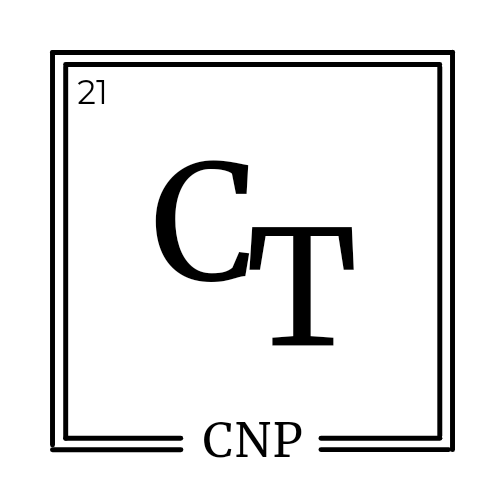Red meat and inflammatory markers- a review of thromboxane and prostacyclin and heart disease
Recently, Bill Lakagos (@caloriesproper) on Twitter made a blog post titled “Red meat won't kill you. It will make you stronger." I like Bill. He seems to do his best at sticking with the facts, and I enjoy the content he puts out. His recent article doesn't disappoint.
For those who follow the nutritional sphere, red meat gets very complicated. You have one person saying red meat is fine. The next person will tell you that red meat will kill you. It can get very confusing.
The point Bill is trying to make in his article is that red meat doesn't increase specific heart disease markers.
What's interesting about this blog is that he references randomized controlled trials instead of observational data. RCTs are the gold standard in understanding a hypothesis because they use randomization and actual human subjects instead of statistical findings.
The blog suggests that red meat doesn't contribute to heart disease, at least within the time frame of the studies. Now, we must understand that RCTs are generally much, MUCH shorter in duration than, say, a prospective epidemiological study that uses years of data.
Objective
I wanted to hone in on one particular marker of inflammation—thromboxane and prostacyclin—for two reasons. Because arachidonic acid (omega-6s in general) is so demonized these days, I wanted to check a box off for one of these particular omega-6 pathways' many functions.
My objective for this post is:
To overview thromboxane, prostacyclin, and their precursor; arachidonic acid's pro-inflammatory effects.
To compare AA and heart disease in both randomized controlled trials and epidemiology.
To see how much the average person eats per day and compare it to heart disease risk.
Abbreviations
AA- Arachidonic Acid
RCT- Randomized Controlled Trial
What are thromboxane and prostacyclin? The importance of prostaglandins and arachidonic acid
https://clincancerres.aacrjournals.org/content/9/5/1577.figures-only
Prostacyclin (PGI2) and thromboxane (TXA2) are types of prostaglandins produced from Arachidonic Acid (AA).
Arachidonic Acid (AA) is a type of omega-6 fat commonly found in animal products. It plays a crucial role in cellular structure and is essential for the nervous, skeletal, and immune systems.
Thromboxane and prostacyclin are both derived from AA and are involved in various bodily functions, including the inflammatory response.
It's important to note that inflammation isn't necessarily harmful; it's a natural response by the body.
Thromboxane plays a role in platelet aggregation, which means it helps clot blood by bringing platelets together, especially in the event of an artery injury. Prostacyclin, on the other hand, helps regulate this clotting process in the blood, preventing excessive clot formation, which could be dangerous if it occurs in the bloodstream.
https://www.webmd.com/dvt/ss/slideshow-thrombosis-types
https://www.researchgate.net/figure/Major-differences-between-arterial-and-venous-thrombosis-A-Arterial-thrombosis-occurs_fig1_311986292
Usually, if there is no break in the vascular wall, all is good. But if there is, it can lead to thrombus formation (blood clot) and sometimes cause a heart attack due to lack of oxygen to the organ.
(I'd like to note that thromboxane is not evil. It is simply doing its job to clot where it needs to.)
Comparing AA intake and heart disease risk
Interestingly, although it's involved in the inflammatory response and cardiovascular disease pathology, the research shows that higher levels of AA are not associated with heart disease risk and may reduce risk. The RCT in Bill's blog shows this, as well as the epidemiology.
Bill's study from the article:
These results indicate that short-term diets which double the usual 20:4n-6 intake using white meat (175-330 g/d) or red meat (275-530 g/d) are not associated with an increased TXA2 production, but this does not rule out the adverse effects of 20:4n-6 at higher levels in the diet, or for more prolonged periods.
A systematic review of RCT's:
The studies reviewed here suggest no adverse effects in adults of increased ARA intake up to at least 1000-1500 mg/d on blood lipids, platelet aggregation and blood clotting, immune function, inflammation or urinary excretion of ARA metabolites...These used between 80 and 2000 mg ARA per d and were of 1-12 weeks duration.
A systematic review:
AA levels were not associated with higher risk of cardiovascular outcomes; comparing extreme quintiles, higher levels were associated with lower risk of total CVD.
How does this compare to the standard diet?
According to this study, estimated averages for developed countries range from 101-351mg/day, ranging from 44-331mg/day in developing countries.
Typically AA is found in animal products. Below is a list of animal foods with their AA amount found here per 100g of food.
Duck yolks- 891mg
Egg yolks- 390mg
Liver- 294mg
Kidney- 153mg
Skinless turkey- 75mg
Lean pork- 56mg
Lean lamb- 49mg
Chicken breast- 31mg
Lean beef- 35mg
These ranges fall very low compared to the systematic review above, which considers 1000-1500mg to be safe without adverse effects or heart disease risk. So it seems safe to say our AA intake as a society is safe.
Conclusion
Omega-6 fats have been demonized by popular health and wellness individuals. This review focused on the thrombosis potential of foods high in arachidonic acid. According to the literature, this does not increase the risk of thrombosis or coronary heart disease associated with thrombosis or platelet aggregation.
References
https://www.ncbi.nlm.nih.gov/pmc/articles/PMC6052655/
https://www.ncbi.nlm.nih.gov/books/NBK539817/
https://pubmed.ncbi.nlm.nih.gov/9208393/
https://pubmed.ncbi.nlm.nih.gov/31130146/
https://pubmed.ncbi.nlm.nih.gov/7562087/
https://www.ncbi.nlm.nih.gov/pmc/articles/PMC6582360/
https://lipidworld.biomedcentral.com/articles/10.1186/s12944-019-1039-y






